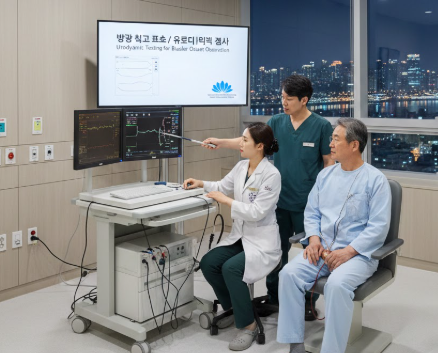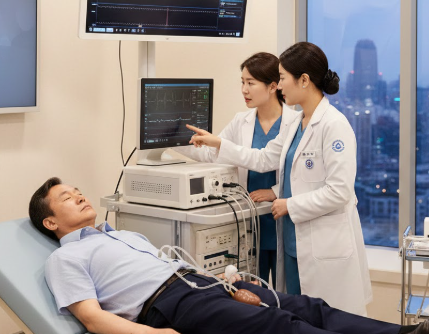Treatment Overview
The Ultrasonic Energy Hysterectomy (UEH) in Korea is a state-of-the-art minimally invasive surgical procedure that uses ultrasonic energy devices to remove the uterus with exceptional precision. This advanced technique allows surgeons to cut and coagulate tissues simultaneously, reducing bleeding, minimizing thermal damage, and preserving surrounding structures.
Korea is a global leader in ultrasonic surgical techniques, integrating them with high-definition laparoscopy, robotic assistance, and enhanced intraoperative imaging. This combination makes UEH one of the most advanced hysterectomy options available worldwide.
Purpose & Benefits
Purpose:
- Remove the uterus for benign or malignant gynecologic conditions
- Minimize blood loss and reduce tissue trauma
- Improve surgical precision and patient recovery
Benefits:
- Reduced intraoperative bleeding due to simultaneous cutting and coagulation
- Shorter operative time compared to traditional methods
- Minimal thermal damage to surrounding tissues
- Smaller incisions with less scarring
- Faster recovery and shorter hospital stays
- Lower risk of complications such as adhesions or nerve injury
- Enhanced precision with high-definition visualization and ultrasonic guidance
Ideal Candidates
UEH is recommended for women who:
- Require hysterectomy for fibroids, adenomyosis, endometriosis, or early malignancy
- Seek a minimally invasive option with advanced precision
- Wish to reduce surgical trauma and recovery time
- Are in good overall health and suitable for laparoscopic or robotic-assisted surgery
Korean hospitals perform thorough preoperative evaluations, including pelvic imaging, to determine candidacy for UEH.
Possible Risks & Complications
Though UEH is considered highly safe, potential risks include:
- Minor bleeding or infection
- Injury to surrounding organs (bladder, bowel, ureters)
- Anesthesia-related complications
- Temporary urinary or bowel changes
- Rare adhesions or pelvic discomfort
Korean surgeons mitigate these risks with advanced ultrasonic technology and meticulous surgical technique.
Surgical Techniques Used
Korean gynecologic surgeons use several cutting-edge approaches for UEH:
- Laparoscopic Ultrasonic Energy Hysterectomy: High-definition laparoscopic guidance combined with ultrasonic devices.
- Robotic-Assisted Ultrasonic Hysterectomy: Combines robotic precision with ultrasonic energy for superior outcomes.
- Single-Port Ultrasonic Hysterectomy: Minimizes incisions for aesthetic and recovery benefits.
- Fluorescence-Guided Imaging: Enhances identification of tissue planes and structures.
- Energy-Sealing Devices: Ensure efficient tissue cutting with optimal hemostasis.
These innovations make Korea a top global destination for ultrasonic energy hysterectomy.
Recovery & Aftercare
Recovery after UEH is generally smooth due to minimal invasiveness and reduced tissue trauma. Hospital stays are typically 1–2 days, and most patients return to light activity within a week.
Postoperative care includes:
- Pain management and wound care
- Avoiding strenuous activity for 4–6 weeks
- Routine follow-up visits
- Pelvic floor rehabilitation if indicated
- Dietary and lifestyle guidance to enhance healing
Many Korean hospitals provide personalized recovery programs, including physiotherapy and holistic support, to ensure optimal outcomes.
Results & Longevity
UEH provides excellent long-term results:
- Effective treatment of uterine conditions
- Reduced postoperative pain and scarring
- Shorter recovery periods
- Preservation of surrounding tissues and pelvic function
- Lower risk of adhesions and long-term complications
Korean centers prioritize precision and holistic recovery, ensuring both effective treatment and improved quality of life.
Treatment Process in Korea
Korea’s UEH programs follow a structured approach:
- Comprehensive Preoperative Assessment: Includes pelvic imaging, lab tests, and consultation.
- Customized Surgical Planning: Selection of the optimal technique based on patient needs and anatomy.
- Ultrasonic Energy Hysterectomy: Performed with high-definition imaging and advanced ultrasonic devices.
- Postoperative Recovery: Personalized rehabilitation with physiotherapy, nutrition guidance, and follow-up assessments.
Korea offers world-class patient care with multilingual support, luxury recovery facilities, and internationally accredited surgical services, making it a premier destination for UEH.
Cost Range
The cost of an Ultrasonic Energy Hysterectomy in Korea generally ranges from USD 9,000 to 16,000, depending on:
- Complexity of the surgery
- Hospital and surgeon reputation
- Use of advanced ultrasonic and imaging equipment
- Extent of postoperative care and recovery program
This cost usually includes preoperative evaluation, surgery, anesthesia, hospitalization, and follow-up care.
Popular Clinics
- Samsung Medical Center (Seoul): Known for advanced ultrasonic gynecologic surgery and integrated robotic assistance.
- Severance Hospital (Yonsei University Health System, Seoul): Leaders in minimally invasive ultrasonic hysterectomy with high patient satisfaction.
- Asan Medical Center (Seoul): Offers advanced ultrasonic energy procedures with comprehensive recovery programs.
- CHA Gangnam Medical Center: Specializes in minimally invasive and high-precision ultrasonic gynecologic surgery.
- Ewha Womans University Medical Center: Recognized for advanced women’s health programs including ultrasonic energy hysterectomy.




